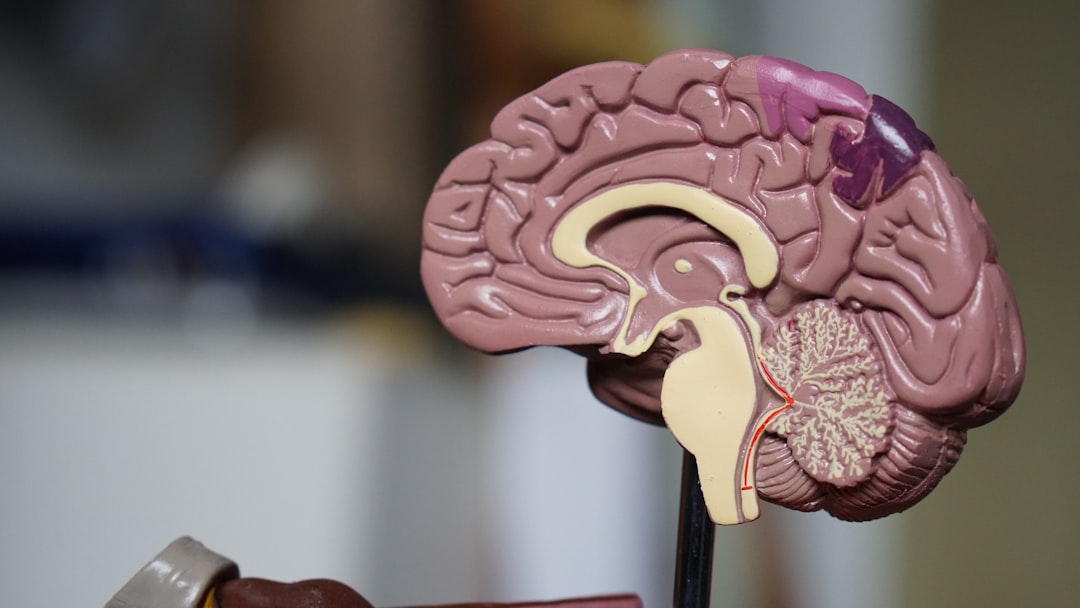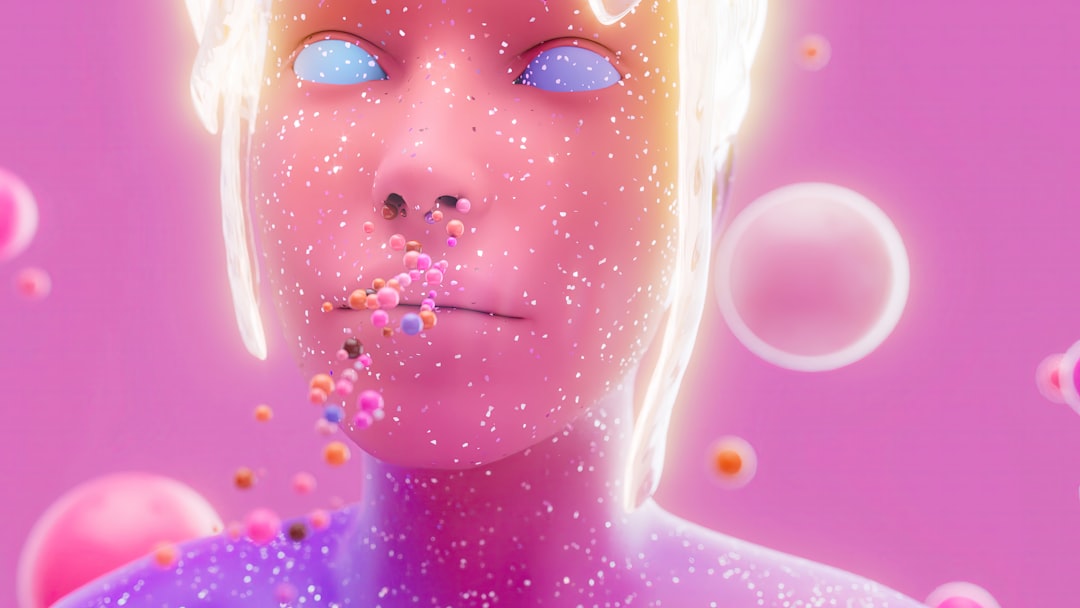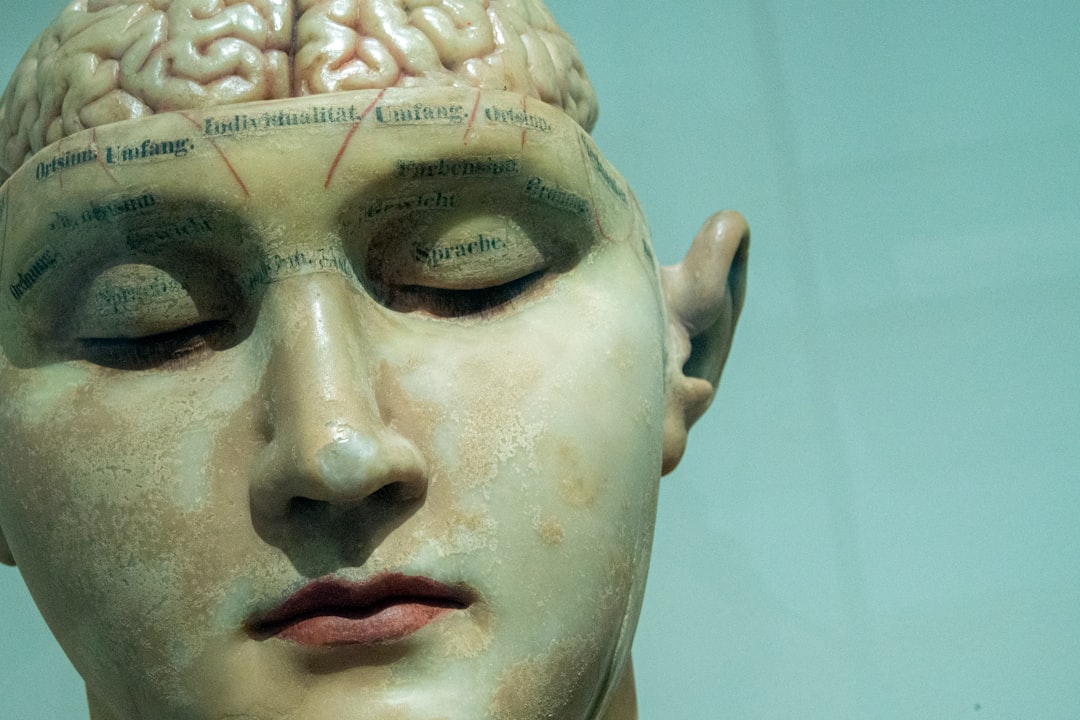The Neurobiology of Emotions vs Feelings Unraveling the Distinction in Mental Processing
The Neurobiology of Emotions vs
Feelings Unraveling the Distinction in Mental Processing - Neural Pathways of Immediate Emotional Responses
The brain's intricate network of neural pathways forms the foundation of our immediate emotional responses. Structures like the anterior cingulate cortex, the insula, and the amygdala play pivotal roles in orchestrating these swift reactions to various stimuli. These responses aren't merely mental events; they are inherently linked to bodily changes, preparing us physically to confront both internal and external situations. The distinction between the automatic, raw experience of an emotion and the conscious awareness of that emotion, which we call a feeling, becomes clear when examining these pathways.
The limbic system, especially the amygdala, acts as a crucial hub for processing and managing emotional experiences. Any disruption to these areas can profoundly affect our ability to understand and control our emotions. By exploring these neural mechanisms, we're able to better understand the sophisticated web that underlies our emotional landscape. This provides a basis for delving deeper into how emotions interact with other cognitive functions within the brain. While the focus here is on immediate responses, it's important to recognize that these pathways are part of a much larger, ongoing dialogue within our neural systems, shaping the full range of our emotional experience.
1. The amygdala, a central hub within the brain, specializes in generating immediate emotional responses. Its rapid-fire processing surpasses the speed of conscious thought, which is crucial for swift survival responses in threatening scenarios. It's like a built-in alarm system.
2. Neural connections related to emotions can develop remarkably fast. This implies that a single, impactful experience can engrave enduring associations, shaping our behavior even long after the event itself has faded. It's a fascinating example of how experiences can sculpt our neural pathways.
3. We've seen evidence that emotional responses can sometimes precede conscious awareness of a stimulus. Reflexive fear reactions are a prime example; these can be truly life-saving, highlighting the brain's capacity to react without conscious deliberation. It's quite remarkable how the brain prioritizes survival.
4. The ventromedial prefrontal cortex plays a pivotal role in regulating our emotional reactions. It serves as a bridge between instinctive, immediate responses and more deliberate, thoughtful feelings. This further solidifies the idea that emotions and feelings are handled by separate neural networks within the brain. This is a great example of how the brain works on multiple levels.
5. It appears that emotional memories are more robust and easier to retrieve. The brain seems to give priority to emotionally intense experiences over neutral ones. This likely stems from the amygdala's heightened activity during the formation of these memories. It is as if the brain's filing system is prioritized.
6. Recent research points towards the anterior cingulate cortex being involved in both feeling emotions and controlling those same emotions. This points to an intricate interplay between the creation of emotions and self-regulation. This relationship between emotion and control is critical to understand human behavior.
7. Oxytocin, often termed the "love hormone," plays a significant role in recognizing emotions within social contexts. The neural pathways involved in this process highlight how crucial emotional connections are to our behavior as social beings. It emphasizes that humans are a social species and emotional interactions are critical to our function.
8. The insula cortex plays a crucial role in becoming aware of emotions. It allows us to feel and label our emotions, illustrating how immediate reactions are often tied to physical sensations. It's quite fascinating how our bodies respond to emotional input.
9. Different types of sensory information can influence emotional reactions. For instance, the color red can trigger feelings of excitement or danger depending on past experiences. This showcases the intricate network of connections between our senses and emotions. It suggests a complex web of associations in the brain.
10. Brain imaging studies show that genuine laughter activates areas in the brain that not only signal pleasure but also support social bonding. This underscores the intricate relationship between immediate emotional reactions and social dynamics. It reveals a beautiful interconnectedness between emotions and social interactions.
The Neurobiology of Emotions vs
Feelings Unraveling the Distinction in Mental Processing - Limbic System's Role in Emotion Regulation
The limbic system serves as a crucial regulator of our emotions, acting as a bridge between initial emotional responses and the conscious effort to manage those feelings. Key structures within this system, such as the amygdala and anterior cingulate cortex, play a significant part in processing emotional data and guiding our actions based on those emotions. Emerging research suggests that emotion regulation is not solely governed by higher-level cognitive processes, but also involves complex interactions within the limbic system itself. This suggests a more intricate interplay, where our emotional state can heavily influence our thoughts and actions depending on the specific situation and our capability to manage our inherent emotional experiences. Recognizing the role of the limbic system allows for a more comprehensive understanding of how emotion and cognition are interwoven within our brain. While we've explored the initial, rapid emotional responses, understanding this system helps clarify how the brain can then take those raw feelings and use them to inform higher-level behaviors and choices. There's a clear need to investigate how this intricate dance between the limbic system and other parts of the brain shapes our overall emotional experience and ultimately our actions.
The limbic system, a complex network of brain structures, plays a crucial role in generating and regulating our emotional experiences. While the specific chemicals involved, like neurotransmitters, aren't fully understood, it's evident they significantly influence our mood and how we manage our emotions. This understanding could potentially lead to improved interventions for conditions like anxiety or depression, where the delicate chemical balance is disrupted.
The limbic system doesn't operate independently. It communicates and interacts with the prefrontal cortex, a higher-order brain region responsible for rational thought and decision-making. This interplay is critical for balancing our emotional responses with logic and reasoning, ultimately impacting our ability to make sound judgments and control impulsive actions. It's a fascinating example of how emotions can either enhance or hinder our cognitive abilities.
The hippocampus, generally known for its role in memory formation, also plays a significant part in emotional regulation. It helps us place emotional events within their broader context, impacting how we respond to similar situations in the future. Essentially, our past experiences shape our emotional reactions in the present, reminding us of the close connection between memory and emotion.
Research suggests that the amygdala, commonly associated with fear processing, also responds to positive emotions such as joy and excitement. This duality broadens our understanding of the amygdala's function, revealing it as a key player in the entire spectrum of human emotion, not just the negative aspects. This challenges some of the initial research in this field and shows how things change in the scientific community.
The degree of interconnectedness within the limbic system differs across individuals, suggesting why some are more emotionally resilient than others. This intrinsic variability could offer valuable insights for developing tailored treatments in mental health. More research is needed to see if this variability can indeed lead to better treatment strategies.
The limbic system is not static; it possesses the remarkable capacity for change, known as neuroplasticity. This inherent flexibility means that with time and effort, our emotional responses can be modified and managed. This offers a hopeful perspective on therapies like cognitive-behavioral therapy, which work by altering the ways in which we process and respond to emotions. If indeed cognitive behavioral therapy changes the way the brain processes things, what would that mean in the larger context of how the brain handles its work?
Prolonged periods of stress can result in structural alterations in the limbic system, particularly in areas like the hippocampus and amygdala. These changes may contribute to emotional instability and dysregulation. This connection underscores the vital role of stress management in maintaining emotional health. Given how often the human condition exposes us to stress, this seems to be an area ripe for more research.
An intriguing aspect of emotion is the link between physical states and emotional responses, a phenomenon known as interoception. The insula, a brain region involved in processing sensory information from the body, plays a vital role in linking physical sensations to emotional experiences. Essentially, our bodily state can influence how we feel, illustrating a complex connection between mind and body.
The limbic system and the endocrine system, the network responsible for hormone production and release, are intricately linked. Hormones like cortisol, often associated with stress, highlight that emotional responses aren't just psychological but also physiological events. This intricate interplay emphasizes the close relationship between our mental and physical well-being. It seems clear that we cannot separate the brain from the body when thinking about emotional responses.
Social environments exert a profound influence on the limbic system. Research indicates that nurturing and supportive social connections can enhance the brain's capacity for emotional regulation, highlighting the importance of social interactions for mental resilience and well-being. This is likely a significant finding, though it may be difficult to test, given the wide variability of social environments. This research, however, is encouraging and likely more research will come out about this idea.
The Neurobiology of Emotions vs
Feelings Unraveling the Distinction in Mental Processing - Mental Experiences of Physiological States
Our mental experiences are intricately linked to our physical state, a connection evident in how feelings arise from our body's physiological conditions and needs. Hunger, pain, and even a sense of well-being can all be reflected in our emotional landscape, highlighting the influence of bodily cues on our mental processes. This complex relationship isn't simply a matter of the body affecting the mind, but also involves the brain actively interpreting and responding to these signals. The brain interprets these physiological signals and then translates them into subjective emotional experiences. How our bodies function shapes not only how we feel, but also influences how we act in response to those sensations. This emphasizes that emotions are not purely psychological events; they're deeply rooted in our physiological makeup and interactions.
The concept of interoception – our awareness of internal bodily sensations – offers a fascinating window into this mind-body link. Essentially, our internal organs and systems communicate with our brain, and the brain interprets those messages as feelings. Understanding the intricate ways our bodies inform our emotions underscores the need for a comprehensive approach when studying emotion. Examining only the psychological or neural components of emotion wouldn't fully explain the nuanced interplay between physiological changes and emotional experiences. It is not a simple cause and effect relationship, but more of a constant feedback loop. A more complete understanding of human emotion requires taking into account this interplay, where the physical and psychological aspects constantly interact and influence each other.
Our internal bodily sensations, like changes in heart rate or breathing, are powerful shapers of our emotional experience. The insula, a brain region that processes these bodily signals, suggests that our emotions aren't purely a mental event but are deeply intertwined with our physiological state. This body-mind link is a crucial aspect of how we perceive and process emotions.
Sustained periods of stress can reshape the limbic system, leading to a heightened emotional sensitivity. This emphasizes the importance of managing stress to preserve emotional stability, highlighting how prolonged physiological strain can alter the brain's delicate balance. It is clear the body and brain are a coupled system.
Emotions, it turns out, are contagious. We can 'catch' the emotions of others, revealing a fascinating interplay between our physiology and social interactions. Mirror neurons within the brain seem to play a key role in this emotional contagion, showing how tightly linked our emotional states are to those around us. This is perhaps an unexpected connection.
Emotions are influenced by a complex web of neurotransmitters and hormones. Serotonin, for example, impacts both mood and our physiological responses to stress, highlighting the intricate dance between our mental and physical states. Perhaps understanding the biochemical foundations of our emotions will reveal further insights into their nature.
Individual differences in emotion regulation might be rooted in our genetic makeup. Genetic variations in neurotransmitter systems, like those involving dopamine and serotonin, could shape how we experience emotions and manage them during stressful times. This opens up the possibility that some people might be inherently predisposed to certain emotional patterns or coping strategies.
Brain imaging studies show that the very act of feeling emotions can physically reshape our brain over time, particularly in regions like the amygdala and hippocampus. This ongoing structural adaptation suggests that we are continually reshaping our brains through our emotions, challenging the idea that emotions are solely a consequence of brain structure.
Interestingly, simple physical touch can activate specific brain regions involved in emotion regulation, such as the prefrontal cortex. This underscores how vital physical interaction and social connection are in modulating our emotions, further challenging the traditional separation of mind and body when it comes to emotions. This again suggests that we must view the brain and body as a coupled system.
The connection between sleep and emotional processing is undeniable. A lack of sleep can intensify emotional reactivity, suggesting that rest is fundamental to emotional stability. Understanding this relationship could lead to strategies to mitigate emotional dysregulation caused by fatigue. The relationship between sleep and emotional regulation is a further testament to the intricate link between the brain and body.
Cultural influences can shape how we express and respond to emotions, suggesting that our physiological states aren't isolated from the wider social context. This challenges the notion that emotions are universally experienced in the same way, highlighting how culture impacts how we perceive and process our emotions. This idea of cultural variability may necessitate modifying the way we develop approaches to understanding and treating emotional disorders.
Mindfulness and yoga, two practices that emphasize the connection between bodily awareness and emotional regulation, can induce lasting alterations in brain function. This reinforces the idea that our physiological awareness and intentional physical actions have a potent impact on our mental well-being. Perhaps there are ways to engineer healthier responses to emotions and stress through the body.
The study of how physiological states influence and interact with emotional experiences is a dynamic field with broad implications for our understanding of the human mind and body. Examining the intricate interplay between the brain, the body, and our social context holds immense promise for understanding emotional well-being, as well as developing effective strategies for enhancing mental health in diverse individuals and groups.
The Neurobiology of Emotions vs
Feelings Unraveling the Distinction in Mental Processing - Evolution of Emotion Research from Philosophy to Neuroscience
The study of emotions has journeyed from philosophical musings to a more scientifically rigorous field, largely propelled by the rise of neuroscience. Early explorations of emotion were primarily philosophical, focusing on the subjective realm of feelings and their impact on human experience. However, the emergence of neuroscience in the 20th century ushered in a new era, providing the tools to investigate the biological foundations of emotional responses. Researchers began to pinpoint specific brain areas, like the limbic system, as crucial components in the processing and regulation of emotions. This shift led to a deeper understanding of the connection between our physiological states and our emotional experiences, bridging the gap between biology and psychology. Furthermore, it became evident that the influence of cultural factors on emotional expression is substantial, implying that the journey to a truly holistic understanding of human emotion remains ongoing, requiring a broader consideration of the biological, psychological, and social aspects interwoven within our emotional landscape.
The exploration of emotions has a long and winding history, beginning with philosophical musings from figures like Aristotle and Descartes who grappled with the nature of emotions long before we had the tools for empirical investigation. Their insights laid the groundwork for the later scientific inquiries that would delve into the physiological underpinnings of our feelings.
The shift from philosophical ponderings to a more rigorous scientific approach to emotions gained momentum in the late 1800s and early 1900s. Psychological theories, such as William James's idea that our bodies' responses inform our emotional experiences, helped usher in a more systematic way of thinking about emotions.
Interestingly, while traditional thinking about emotions often categorized them into distinct boxes, modern neuroscience is painting a more complex picture. It seems emotions might not fit neatly into these pre-defined categories. Research hints that emotions can actually mix and blend, creating unique and individualized experiences that defy our simple classification attempts.
The field of emotion research has become increasingly multidisciplinary, weaving together knowledge from psychology, neuroscience, and even anthropology. This emphasis on social and cultural factors challenges the earlier, more isolated ways of studying emotions. It's clear that our emotions aren't just products of our brains in a vacuum, but are shaped by the environments and cultures we're immersed in.
Brain imaging, especially fMRI, has revolutionized our ability to study emotions. Now, scientists can peek into the brain in real-time and see how different parts light up during various emotional experiences. This incredible advance offers a previously unimaginable window into how our brains handle emotions.
One of the complications in emotion research is the fact that emotional processing is highly individualistic. Our genes and the environments we grow up in seem to influence how we perceive and regulate emotions. This inherent variability makes it challenging to develop generalized approaches to understand and treat emotional difficulties.
The gut-brain axis is a fascinating new area of research in emotional regulation. Turns out, the bacteria in our gut might play a significant role in influencing mood and emotional states. It highlights that our physical health and mental well-being might be far more intertwined than previously thought. This is an area where we're just scratching the surface of understanding.
Different emotions appear to activate unique neural networks within the brain. This suggests that the experiences of love, anger, and other emotions are not just different psychological flavors but actually involve different patterns of brain activity. It adds another layer of complexity to how our brains generate and process emotions.
Recent research suggests that emotional intelligence, our ability to recognize and manage emotions, is not a fixed trait. Instead, it's something that can be developed and improved through specific training. This could pave the way for new interventions designed to help people enhance their emotional regulation and improve social interactions.
Finally, our cultural backgrounds play a significant role in how we understand and experience emotions. Studies have shown that societal norms and expectations influence not only how we outwardly express emotions but also how we feel them internally. It implies that any universally applicable model of emotional processing is likely to be quite limited.
The Neurobiology of Emotions vs
Feelings Unraveling the Distinction in Mental Processing - Interconnectedness of Emotional and Cognitive Brain Structures
The intricate relationship between emotional and cognitive brain structures challenges the idea that they operate in separate compartments. Research demonstrates that areas of the brain usually associated with cognitive functions, such as the prefrontal cortex responsible for higher-level thinking, are also deeply involved in processing emotions. This suggests that the brain isn't a simple division of labor, but rather a complex network where different areas work together. Certain brain regions act as central hubs, integrating information from both cognitive and emotional parts of the brain, facilitating a constant interplay between the two. This integrated process is critical for regulating our emotional experiences and for understanding how they impact our thoughts and actions. Furthermore, areas like the hypothalamus, traditionally associated with basic bodily functions, have surprisingly strong connections to emotional processing regions, demonstrating how deeply ingrained emotional regulation is in our biological systems. This dynamic interplay highlights the brain's sophisticated capacity to weave together cognitive and emotional aspects into a unified experience, forming a more comprehensive and holistic view of our emotions. Comprehending this interconnectedness is vital for developing strategies that help us understand and manage our emotional responses more effectively and contribute to overall mental well-being.
The traditional notion of a clear separation between "emotional" and "cognitive" brain areas is increasingly being challenged. We're finding that brain regions traditionally associated with cognitive functions, like the dorsolateral prefrontal cortex and working memory areas, are deeply involved in emotional processing. This blurring of boundaries suggests that the prefrontal cortex isn't just involved in rational decision-making but also plays a key role in tempering the more immediate emotional responses generated by regions like the amygdala. It's a fascinating example of how different aspects of mental function are intertwined.
It's becoming increasingly clear that emotional processing isn't limited to the limbic system. Brain regions involved in memory, sensory information, and other cognitive processes are also significantly involved in the generation and experience of emotion. It's as if every emotion is a complex symphony orchestrated across a wide range of neural structures, a far cry from the simplistic view of emotion as being confined to a few isolated regions. This points towards a richer and more complex model of how the brain creates and uses emotions.
There's a remarkably strong link between our emotional experiences and the state of our bodies. It's not just that the body influences the brain, but we're seeing evidence of specific neural pathways connecting physical sensations, like changes in heart rate or a racing pulse, to emotional states. This means that a racing heart isn't just a physiological reaction; it's deeply intertwined with the emotional experience of anxiety, for example. It's further evidence that it's not a good idea to separate the body from the mind when considering emotional processing.
One of the exciting aspects of brain research is the idea of neuroplasticity, or the brain's ability to change and adapt. It means that through experience, learning, and targeted interventions, we can reshape our emotional and cognitive pathways. This is what makes therapeutic approaches, like mindfulness training, potentially so powerful. These approaches don't simply focus on psychological techniques; they appear to directly alter brain function and emotional regulation strategies in measurable ways. This shows that even seemingly fixed aspects of the brain can be modified.
It's intriguing that factors outside the brain, like our social interactions, can influence the very same neural mechanisms involved in emotional regulation. It seems that supportive relationships can strengthen the neural pathways that govern emotional control, contributing to increased emotional resilience. This idea has implications for mental health interventions, suggesting that social factors should be considered alongside more traditional approaches.
Genetic factors appear to play a significant role in how individuals handle emotions. Variations in our genetic makeup, particularly in genes involved in neurotransmitter systems like serotonin and dopamine, could explain why some people seem to be more susceptible to emotional disorders or simply experience emotions in distinctive ways. Understanding these variations could open up new avenues for developing more personalized approaches to mental health treatment.
We also find remarkable variability in how individuals process emotions. Some individuals seem to be naturally wired to respond very quickly and intensely to emotional stimuli, while others are slower to react and more measured in their responses. This wide variation further underscores the fact that emotional experience is incredibly complex and individualized. It challenges the idea of a "one-size-fits-all" approach to studying or managing emotional issues.
The insula, a brain region involved in our awareness of bodily states (interoception), appears to be a crucial hub in emotional awareness and regulation. Increased activity in this region is associated with greater emotional intelligence and self-regulation abilities. This demonstrates a connection between our physical sensations and our emotional awareness, a critical aspect of emotional intelligence and self-regulation.
Recent advancements in brain imaging are giving us a more nuanced understanding of how different emotions might generate distinct patterns of brain activity. This means that the experience of love, fear, or joy, for example, isn't simply a subjective feeling; it's likely accompanied by specific patterns of neural activation. It's an exciting development in understanding the neurobiology of emotion.
As we continue to explore the interconnectedness of emotions and cognitive processes, some neuroscientists are suggesting that we may need to revise our understanding of emotional disorders. Instead of viewing them as simple imbalances in single neurotransmitters, perhaps we should be thinking about them as complex problems of network dysregulation within the brain. This shift in perspective could open new doors in terms of therapeutic strategies.
The Neurobiology of Emotions vs
Feelings Unraveling the Distinction in Mental Processing - Unique Neural Bases for Basic Emotions
The idea of distinct neural pathways for basic emotions reveals a complex picture of how emotions are processed within the brain. Research using neuroimaging has shown that specific emotions, like anger, fear, and happiness, are linked to unique neural circuits. This discovery opposes the notion that emotions are simply a result of general cognitive activity. Essentially, certain emotional experiences trigger unique patterns of brain activity, which can differ widely between people. As research continues, it's becoming clear that we need to look more deeply into the interplay between emotions and cognitive processes to fully grasp how emotions impact our choices and actions. Advances in neuroscience continue to illuminate the underlying neural mechanisms that drive our fundamental emotional experiences. There's a lot we still don't know about this intricate process, and ongoing research will help refine our understanding further.
Brain imaging has provided compelling evidence that basic emotions, while seemingly simple, have unique neural underpinnings. This idea of specific emotional circuits within the brain challenges older perspectives that didn't emphasize dedicated neural pathways for these fundamental experiences. Studies have shown that distinct neural activation patterns can even differentiate between different emotional categories, offering a clearer picture of how the brain processes diverse emotions. The concept of "basic emotions" itself has been a point of discussion in psychology for a long time, and neuroimaging research has offered a new angle on it.
It's fascinating that diverse emotions like anger, fear, or surprise appear to involve different networks in the brain. This notion of specificity is not just a philosophical exercise, but potentially a foundation for developing more targeted interventions for emotional difficulties. The discovery that the insula, an area involved in our awareness of bodily states (interoception), plays a crucial role in emotional intelligence is quite striking. It seems that our physical sensations might be strongly linked to how we perceive and control our emotional experiences, revealing the intricate mind-body connection involved in processing emotions.
Genetic differences also seem to influence emotional responses. Variations in neurotransmitter systems, like those involving serotonin and dopamine, suggest that people may be inherently more or less prone to certain emotional patterns. This finding opens up the possibility of a more personalized approach to emotional healthcare, potentially tailoring treatments based on individuals' genetic predispositions. We also find that emotions can 'spread' in a sense – mirroring the emotions of others appears to be a common human experience, suggesting that emotional processing is not simply an internal phenomenon but a dynamic interplay with our social environments.
Neuroplasticity, or the brain's ability to change and adapt, offers a glimmer of hope when considering emotional regulation. This inherent plasticity suggests that, with the right approaches, emotional responses can be reshaped over time. This provides support for practices such as mindfulness training, which may help alter neural circuits involved in emotional regulation, offering a tangible pathway for improving emotional management. Moreover, social connections appear to significantly influence emotional regulation, possibly by enhancing certain neural pathways associated with emotional control. This is quite notable, emphasizing that social relationships can promote resilience and coping abilities.
Unfortunately, chronic stress seems to wreak havoc on parts of the brain involved with emotion, specifically in structures like the amygdala and the hippocampus. These structural changes may contribute to difficulties with emotional stability and regulation, further reinforcing the intimate connection between psychological state and physical well-being. Advanced brain imaging has given us a new view into emotional responses, showing that each emotion might activate a distinctive pattern of brain activity. This paints a picture of emotional responses being far more intricate than previously thought, with a unique neural 'fingerprint' for each emotion.
There's a growing awareness that the gut and brain seem to be linked in ways we're only starting to grasp. The idea that the gut's microbial communities can have an impact on our moods and emotional states suggests that a broader, more holistic view of emotional health is needed. We're seeing a possible shift in how we conceptualize emotional difficulties, moving beyond simple neurotransmitter imbalances to a more complex network-level dysfunction within the brain. This new lens could spark changes in how we approach therapeutic strategies, making them more comprehensive and potentially more effective. As the field of emotional neuroscience continues to evolve, we gain a more refined understanding of how the brain generates, processes, and regulates the incredible spectrum of human emotions, a journey that will undoubtedly reveal further intriguing insights into this core aspect of the human experience.
More Posts from psychprofile.io:
- →Body Image and Partner Validation How Relationship Dynamics Shape Self-Perception
- →Mindful Presence 7 Science-Backed Benefits for Mental Health in 2024
- →The Neurobiology of Sociopathy Unraveling Brain Differences in Antisocial Personality Disorder
- →7 Behavioral Patterns of Covert Male Narcissism in Professional Settings A 2024 Analysis
- →The Hidden Link How Childhood Emotional Neglect Affects Adult Physical Health Outcomes
- →The Hidden Complexities of Introvert-Extrovert Personality Tests A 2024 Analysis




